Books
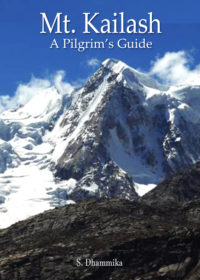
Mt. Kailash, A Pilgrim’s Companion
After Mount Everest, Mount Kailash is the most celebrated mountain in the Himalayas. The name Kailash is derived from the Sanskrit kailāśā meaning ‘crystal’. It is 6,714 meters (22,028 ft.) above sea level and some 2000 meters above the surrounding plain. Technically Mt. Kailash is not in the Himalayas but in what is called either the Gangdise Range or the Kailash Range which runs parallel to the Himalayas. Despite its fame it is by no means the highest mountain in the Himalayas, not even the highest in the region.

Mount Potala
After the Buddha himself, the most revered and universally popular figure in Buddhism is Avalokitesvara, the bodhisattva of compassion. Since his appearance in about the first century BCE this beloved bodhisattva has been worshipped with almost unparalleled fervor by the followers of all schools of Buddhism. Though accessible through prayer and supplication to anyone anywhere, Avalokitesvara was believed to abide on a mountain in a remote part of India where, from its lofty and cloud-decked heights, he could be as his name suggests, “the regarder of the cries of the world”. This mountain was called Potala or sometimes Potalaka. It seems that from about the first century CE pilgrims began visiting Potala although records are very scant.

Sri Pada
Mount Sinai was considered sacred at a much earlier date, Mt. Fuji surpasses it in beauty and height, and Mt. Kilash evokes a far greater sense of mystery. Nevertheless, no other mountain has been revered by so many people, from such a variety of religions, for so many centuries as Sri Pada has. In Sanskrit literature Sri Pada is called variously Mount Lanka, Ratnagiri (Mountain of Gems), Malayagiri or Mount Rohana. This last name, like its Arab and Persian equivalent, Al Rohoun, is derived from the name of the south western district of Sri Lanka where Sri Pada is situated. In several Tamil works it is known as Svargarohanam (The Ascent to Heaven) while the Portuguese called it Pico de Adam and the English Adam’s Peak. In the Mahavamsa, the great chronicle of Sri Lanka written in the 5th century CE, it is called Samantakuta (Samanta’s Abode) while in modern Sinhalese it is often called Samanelakhanda (Saman’s Mountain).
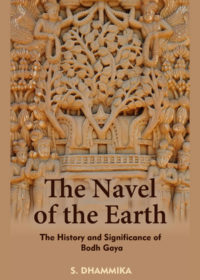
The Navel of the Earth
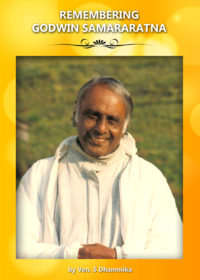
Remembering Godwin Samararatna
Excerpt of the book:
Based on a talk given at the
Nilambe Meditation Center on the 4th anniversary of his passing away
Godwin Samararatna was born on the 6th of September 1932 in Kandy, Sri Lanka. His father was the chief clerk of a tea estate at Hantane in the hills above Kandy and his mother was a simple up-country housewife. A younger sister died prematurely and an older brother died in a car accident on the day of his wedding. Godwin was the youngest of the two surviving brothers, Felix and Hector and his sisters were Dorothy, Matilda and Lakshmi. The family lived in a modest house at 145 Peradeniya Road just a short walk from the heart of Kandy. Everyone agrees that Godwin showed an interest in Buddhism from his earliest time, due mainly to the piety of his mother. When she went to the local temple of Poya days he always accompanied her and would sit listening to the sermons rather than play games as the other children did. Once he turned up at home with two which he had surreptitiously picked from someone’s garden. His mother asked where he had got them from and when he told her she went with him back to the house and made him return the vegetables.
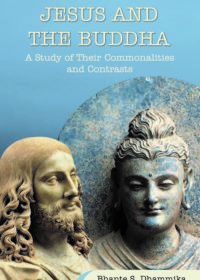
Jesus And The Buddha
During the last hundred years it has increasingly been said that all religions are actually pointing to the same reality. Now there are numerous books claiming that the teachings of Jesus and the Buddha are just different versions of the same truth. Is this true or is it the outcome of a superficial examination of the facts or perhaps a genuine but misguided attempt to encourage inter-religious understanding? This book is the first in-depth comparison of the life and teachings of Jesus and the Buddha and presented in the New Testament and the Tipitaka, the Buddhist scriptures. The result is portraits of the two great religious figures very different from how they have traditionally been seen and the question ‘Are Christianity and Buddhism compatible?’ is answered in a way that may surprise many readers. Bhante Shravasti Dhammika is well placed to write this comparative study having been brought up a Christian and later becoming a Buddhist and a monk.
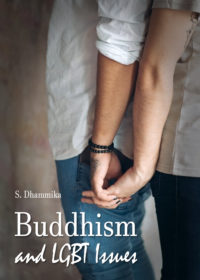
Buddhism and LGBT Issues (pdf)
Before starting it will be necessary to make it clear what is meant by Buddhism in this article. As with other religions, Buddhism has a long history during which it has developed and evolved, branched into divergent schools and sects, and been interpreted in various ways by different philosophers, reformers and saints. And as with other religions it is not always easy to get agreement by Buddhists on every issue. However, Buddhism started with the experience of a particular individual, Siddhattha Gotama, and at a particular time in history, the 5th/ 4th century BCE. Without going into the complexities of the issues, this article takes the position that the earliest and therefore the most authentic account of the Buddha and his teachings is contained in the Pali Tipitaka, the huge body of literature now considered canonical by the Theravada school of Buddhism. While this article deals mainly with homosexuality it will also make some references to related states, gay adoption, transgenderism, etc.
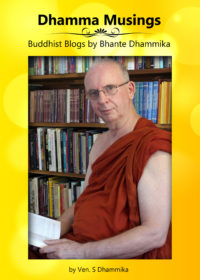
Dhamma Musings (pdf)
Between 2008 and 2017, Bhante Dhammika maintained a blog commenting Buddhist doctrine, Buddhist culture and art, and current affairs from a Buddhist and sometimes a personal perspective. At its height it got some 12,000 visits a day. This eBook has a selection of what is some of the more interesting blog posts.
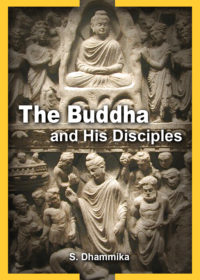
Buddha and His Disciples
The life of the Buddha is more than an account of one man’s quest for and realization of the truth; it is also about the people who encountered that man during his forty five year career and how their encounter trans-formed them. If the Buddha’s quest and his encounters with others is set against the backdrop of the world in which these events were acted out, a world with its unique customs, its political intrigue and its religious ferment, it becomes one of the most fascinating stories ever told.

Broken Buddha
There is no law in history which guarantees that Buddhism will grow roots in the West or advance beyond its present infantile stage. But one would expect that it will grow more conscious of its own difficulties and Buddhists will awaken to the problems which Buddhism itself thrusts upon man as an essential part of its treasure. One would also hope that doubt should appear as the sign of a deeper conviction. – Luis O. Gomez
